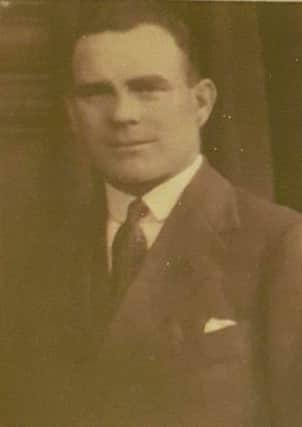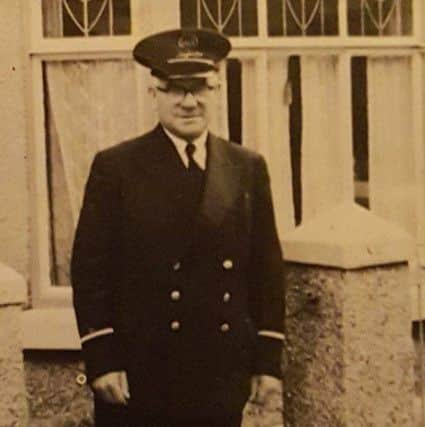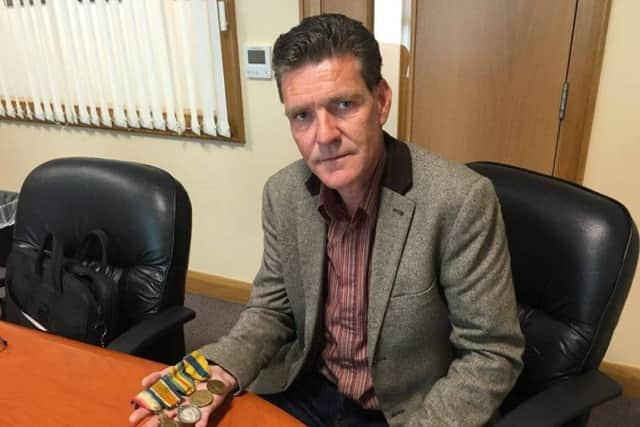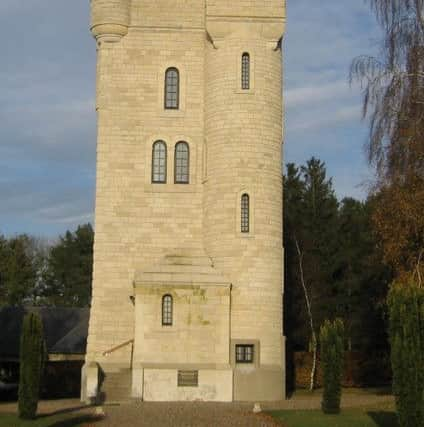The Battle of the Somme: How one 16 year old discovered the horror of war


When the day of July 1, 1916 had ended they had suffered almost 5,000 casualties: 79 officers and 1,777 other ranks lay dead, 102 officers and 2,626 other ranks were wounded, seven more officers and 206 others were missing and one officer and 164 other ranks were taken prisoner.
One man from this city amongst those who took the field that day was a young man from Barrack Street.
Advertisement
Hide AdAdvertisement
Hide AdHe was John Ross Smith Rutherford, known as Jack. He and his family worshipped at First Derry Presbyterian Church. Just inside the door of the church on Magazine Street is a plaque recording his name and others from the congregation who survived the Great War. Just a few feet away is another plaque that records the names of those who did not return home.


For the past century the dreadful losses incurred by the 36th Ulster Division has been seared into the psyche of Ulster Protestantism. As promised in the aftermath of WWI their sacrifice and names have never been forgotten.
This morning Jack Rutherford’s grandson will stand at the Ulster Memorial at The Somme. John Boyle however does not come from the Unionist tradition however. He is a nationalist councillor for the SDLP on Derry City and Strabane District Council.
Colr Boyle is part of a delegation from the local authority that will attend the ceremony today which will also include Aldermen Graham Warke and Allan Bresland of the DUP and Alderman Derek Hussey of the UUP.
Advertisement
Hide AdAdvertisement
Hide Ad“My mother bought a book about the First World War at Christmas, 1974. My grandfather recorded his entire record in it. Initially he joined the 10th Battalion of the Royal Inniskilling Fusiliers and then went to the 109th Machine Gun Company of the 36th Ulster Division and then spent time in the 114th Machine Gun Company of the 58th London Division-how that came about I am not entirely sure.


“All in all he spent around three years and three months on the Western Front. He arrived there in October, 1915 and saw combat, but nothing like he would encounter on July 1, 1916 at The Somme,” said John.
An often discussed, common character trait of those of Jack Rutherford’s generation was the stoicism with which they lived the remainder of their lives having seen such carnage as young men.
John Boyle continued: “My grandfather didn’t talk a lot about his experiences, but from his company of 200 just 21 came back unscathed of which he was one. As he put it, 19 men and two officers survived. He fought at The Somme, the 3rd Battle of Ypres which of course included The Battle of Passchendaele, and he was also at Messines Ridge and The Battle of Cambrai. If anyone knows anything about the history of WWI it is miraculous that he survived those particular battles.”
Advertisement
Hide AdAdvertisement
Hide AdIn fact Jack Rutherford was wounded at The Battle of Cambrai, but after a brief period of treatment he was deemed fit enough to return to the front was soon back in combat. He was not discharged from the Army until January 1, 1919 and so had seen the war through to its conclusion.


His grandson said: “He was discharged relatively quickly because he had an apprenticeship in the old Derry shipyard to come back to. Some years later, he met my grandmother and converted from Presbyterianism to Catholicism and had five children, of which my late mother Cecilia, was one.
“He was born in 1898, lived until he was 84 and he died in 1982. Ironically, I was 17 when he died and he was 17 when he was at The Somme. I was the grandchild that was named after him. Jack’s first wife had died very young and it was in the 1930s that he met my grandmother who was Susanna McLaughlin from Shrove.
“He was an inspector on the Lough Swilly bus service and he worked there until he retired in 1966, the year I was born. He was well-known in Derry but actually more so in Inishowen.
Advertisement
Hide AdAdvertisement
Hide Ad“A very interesting thing about him was that he was very regimented his entire life. He worked by the clock as a bus inspector and I never knew him to be late for anything in my life. The thing about him was that he was a very gentle being as I remember him. He wasn’t given to bouts of anger, he was very calm. Taking him as I knew him, albeit as a younger man, and I as a young child and teenager, he was probably the last person I expected to have been fighting on the Western Front. It just didn’t seem to be in his nature.


“I think how he came to join the British Army was that he saw it as an adventure. I recall him saying that. He was 16 when he enlisted. We live in a very different time now. There was no modern communications systems then in comparison to now, so at 16 years old he probably did think it was a ‘Boy’s Own’ adventure he was going to. Ultimately, he found out very quickly that wasn’t the case. I understand that his mother tried to buy him out of the Army because he was too young and joined against their wishes but by the time that process came about he was of age.
“Perhaps he fell for the phrase as written by Wilfred Owen-‘ dulce est decorum est pro patria mori’ (it is sweet and honourable to die for one’s country). As that poem points out, it was far from glorious. Millions like him fell for it.
“It’s an interesting thing that here I am, a nationalist councillor in Derry and my own family history has within it this man who saw untold horrors, lost many friends and fought side by side with the Irish Division and even served in the London Division. When I think about it, I think about the sheer untold waste of life.
Advertisement
Hide AdAdvertisement
Hide Ad“My grandfather didn’t go unwounded physically, or probably psychologically. It lived with him for his entire life but he dealt with it in a very quiet way. Look back 100 years. There was no such diagnosis as Post Traumatic Stress Disorder, these men were not given treatment. They were literally discharged, sent back home and told to get on with it. He was 20 years old when he went back out into the world.”
Speaking to the ‘Journal’ before today’s commemoration at The Somme Colr Boyle said: “I am going to represent the people of this city and district. I have never been before but I have thought about the poignancy of standing in the fields that my grandfather probably stood in 100 years ago to the day.
“I think it is important to reflect all sides of political opinion in our city of today, but also to reflect upon the various shades of political opinion and religious beliefs that existed 100 years ago too because we do live in a very different time.


“Tragically, wars still continue and people still slaughter each other. I know that my grandfather for the rest of his life was a pacifist after his experiences and he always said that the real heroes were left behind in the graveyards of France and Belgium. I’ll be thinking about him as I often do anyway.
Advertisement
Hide AdAdvertisement
Hide Ad“The mixed history that we as a country, and by that I mean all of Ireland, is phenomenal. I don’t think it was ever right that these stories were hidden in attics.
“Although, I can understand why people felt reticent about telling them in an Irish political context.
“But my family always knew my grandfather fought in the First World War and we were never ashamed of him, we just accepted that it was part of his life experience. He looked after his medals and that’s all he came out of it with.
“He visited The Somme on the 50th anniversary in 1966 and a result he received another medal from the French Government.
Advertisement
Hide AdAdvertisement
Hide Ad“I am going to represent the people of this city and I don’t care what their background is.
“There are people in this city whose great grandfathers and uncles from the nationalist and unionist traditions fought in many battles on the Western Front and as a public representative I see it as my duty to represent all shades of opinion that were involved then and indeed now.”